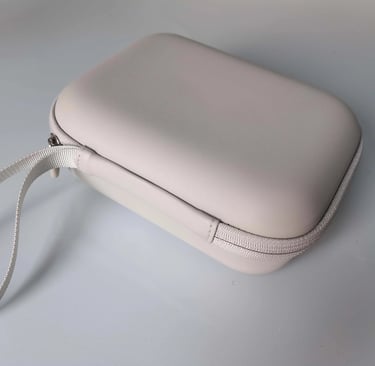How to Choose the Right EVA Tool Case for Your Instruments
10/18/20252 min read


Introduction
Tools are often exposed to dust, moisture, and impact during transport — especially in demanding fields like maintenance, field service, workshops, and technical installations. When your equipment matters, a reliable protective case can make all the difference. In this article, we’ll explore how a custom EVA tool case can provide the ideal solution for your instruments, help you stay organized, and give you peace of mind.
What is an EVA Tool Case?
An EVA (ethylene vinyl acetate) tool case is a hard-shell or semi-rigid protective case constructed from molded or laminated EVA foam and outer shell materials. Unlike simple soft bags, an EVA tool case offers:
Shock and impact resistance: The foam and shell protect delicate tools from drops and vibrations.
Lightweight yet durable: EVA material keeps the case light while maintaining strength.
Water-resistant or splash-proof: Many models include sealed zippers or shells that reduce water intrusion.
Customization options: You can often specify inner foam cut-outs, logo embossing/printing, custom size, colour and carry handles.
Key Benefits of Choosing a Custom EVA Tool Case
Tailored to your tools – Rather than forcing your tools into a standard case, a custom case allows precise cut-outs, better fit, and professional presentation.
Enhanced brand image – If you’re supplying tools to clients or operating a service business, a custom printed logo or colour scheme adds credibility.
Better protection for expensive instruments – Whether you’re carrying electronic diagnostic tools, precision mechanical kits, or field service gear, the rugged design of EVA helps avoid damage and downtime.
Organised transport and storage – Dedicated compartments reduce time wasted searching for the right tool and improve inventory control.
Customization Tips: What to Consider
Size & layout: Measure your largest tools and accessories, think about future additions.
Foam inserts: Choose between pre-cut foam, custom cut foam, or pick-and-pluck style foam.
Outer shell material & finish: Some cases use textured polypropylene, others use coated fabrics over EVA. Consider ruggedness vs. portability.
Carry and closure: Look for ergonomic handles, wheels (for tool kits that roll), heavy-duty zippers or latches.
Branding & aesthetics: Consider embossed logos, custom colours, inner lining prints, or labels for compartments.
Environmental & transport constraints: If your kit goes through airports or is shipped overseas, check weight limits, IP rating (water/dust resistance) and airline compliance.
Use Cases: Who Benefits the Most?
Field service technicians carrying diagnostic meters and tools to client sites.
Repair workshops needing mobile tool kits that serve multiple jobs.
Manufacturing engineers transporting calibration equipment across sites.
Trade show teams transporting demo tools securely and professionally.
Conclusion & Call to Action
Choosing the right EVA tool case isn’t just about buying a box—it’s about protecting your investment, projecting professionalism, and improving workflow. If you’re looking for a reliable custom EVA case manufacturer, we at Casero specialise in designing and producing high-quality hard-shell EVA tool cases with custom foam inserts, custom branding and global shipping support.
Contact us today for a free quote and product sample.